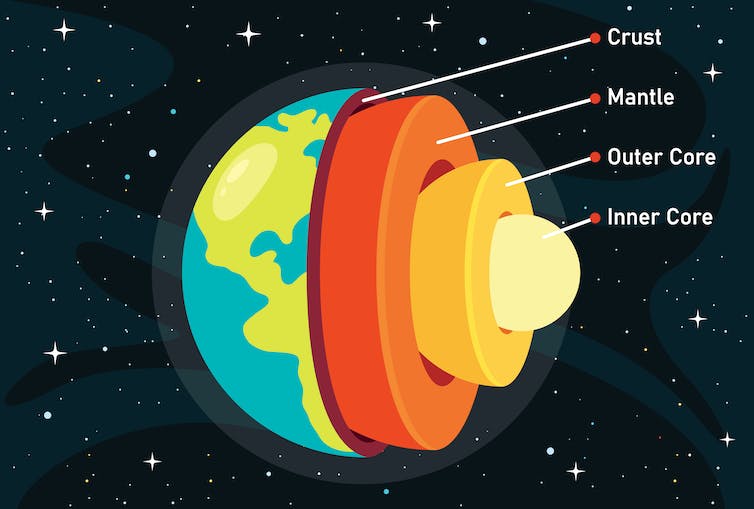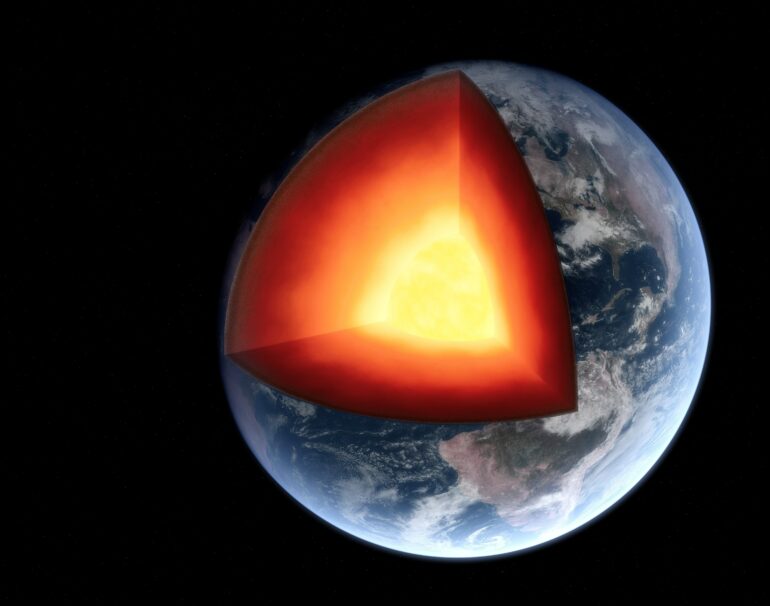
Curious Kids is a series for children of all ages. If you have a question you’d like an expert to answer, send it to [email protected].
How does the inside of the Earth stay boiling hot for billions of years? Henry, age 11, Somerville, Massachusetts
Our Earth is structured sort of like an onion – it’s one layer after another.
Starting from the top down, there’s the crust, which includes the surface you walk on; then farther down, the mantle, mostly solid rock; then even deeper, the outer core, made of liquid iron; and finally, the inner core, made of solid iron, and with a radius that’s 70% the size of the Moon’s. The deeper you dive, the hotter it gets – parts of the core are as hot as the surface of the Sun.

This illustration depicts the four sections beneath the Earth’s surface.
eliflamra/iStock via Getty Images Plus
Journey to the center of the Earth
As a professor of earth and planetary sciences, I study the insides of our world. Just as a doctor can use a technique called sonography to make pictures of the structures inside your body with ultrasound waves, scientists use a similar technique to image the Earth’s internal structures. But instead of ultrasound, geoscientists use seismic waves – sound waves produced by earthquakes.
At the Earth’s surface, you see dirt, sand, grass and pavement, of course. Seismic vibrations reveal what’s below that: rocks, large and small. This is all part of the crust, which may go down as far as 20 miles (30 kilometers); it floats on top of the layer called the mantle.
The upper part of the mantle typically moves together with the crust. Together, they are called the lithosphere, which is about 60 miles (100 kilometers) thick on average, although it can be thicker at some locations.
The lithosphere is divided into several large blocks called plates. For example, the Pacific plate is beneath the whole Pacific Ocean, and the North American plate covers most of North America. Plates are kind of like puzzle pieces that fit roughly together and cover the surface of the Earth.
The plates are not static; instead, they move. Sometimes it’s the tiniest fraction of inches over a period of years. Other times, there’s more movement, and it’s more sudden. This sort of movement is what triggers earthquakes and volcanic eruptions.
What’s more, plate movement is a critical, and probably essential, factor driving the evolution of life on Earth, because the moving plates change the environment and force life to adapt to new conditions.
You’ll be amazed at all the life happening below your feet.
The heat is on
Plate motion requires a hot mantle. And indeed, as you go deeper into the Earth, the temperature increases.
At the bottom of the plates, around 60 miles (100 kilometers) deep, the temperature is…
